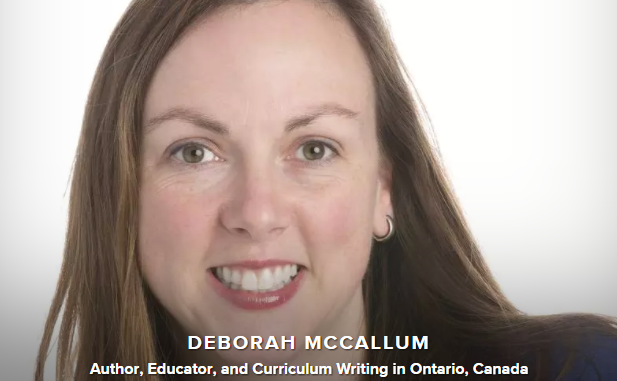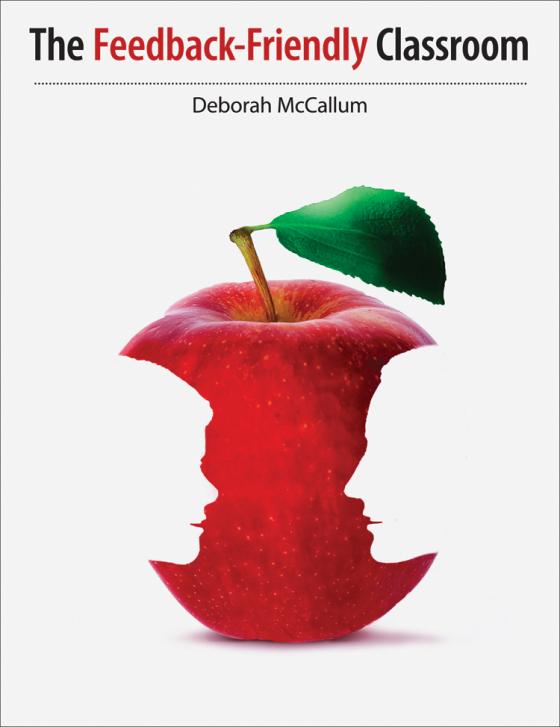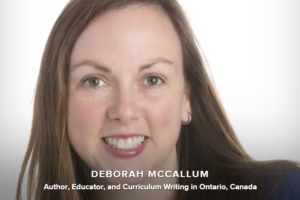
By Deborah McCallum
Providing feedback can feel like a very big and daunting task. This is especially true in the Library Learning Commons, where the number of students, staff, and others come through the library on a daily basis. The first step is to identify what exactly the feedback will be provided for. While there are many different types of feedback that could be provided to students at any given moment, and in any given conversation, it is essential to have a clear plan to hone the feedback so that it promotes meaningful student learning.
The act of giving feedback can be challenging if the TL has too many things to focus on at once. Many teacher-librarians experience difficulty focusing on the students that they are teaching, let alone everyone else that comes into the Library for help. However, since co-planning and co-teaching are major elements of what a teacher-librarian does, it is important to set norms and rules of how the Library Learning Commons will be used in order to protect the time necessary to co-plan and co-teach for student learning. With the Learning Commons as the ‘hub’ of the school, the norms and rules need to be reinforced and practiced on a regular basis.

Next, it is essential to think specifically about how we are co-planning and co-teaching with our colleagues, in order to know best how to provide the feedback. The next sections will briefly outline some of the considerations that need to be in place to provide meaningful and effective feedback to students in the Library Learning Commons.
First and foremost, building relationships is key to providing solid feedback. In the Library Learning Commons, the whole school community is involved. Therefore, actively striving to build relationships is key. Feedback will not be received well, and can even be damaging without strong relationships. Therefore, in working up to providing quality feedback, relationship-building needs to be built into the fabric of the co-teaching and co-planning that takes place.
It is also important to identify the key content of your program that you are focusing on. Ideally, this is negotiated and planned with colleagues, to enhance the learning and achievement for the students. Two components that will further become the focus of this article include setting clear learning goals, and designing worthwhile and meaningful rich tasks for students. These two components are essential for creating the necessary frameworks to provide effective feedback for students.
In order to provide meaningful feedback, it is essential that the teacher-librarian is purposefully co-planning and co-teaching with teachers to provide clear goals and worthwhile tasks for students. Further, the worthwhile tasks need to connect strongly back to the learning goals.
Once these components have been planned with the student needs in mind, then comes the task of anticipating how students will respond, learn together, problem solve together and more. Once we have anticipated what will occur based on what we already know about the students, then comes the task of anticipating the feedback that can be provided.
According to Brookhart (2005), there are three different ways that we can look at giving feedback. The first is feedback from the lens of a microscope. Here we are thinking deeper about the content of our message, and we can ask ourselves questions including is my feedback evaluative or descriptive? How do I know? Is my feedback timely? Does the feedback contain the correct amount of information? Does it compare to the learning goals? Does it focus on the processes involved in the worthwhile task? Or the end product? Is my feedback positive and clear? Specific, but not too specific?
Second, zooming out a bit, we look at our feedback from the lens of a snapshot, and we ask ourselves different questions including what am I learning with and from my students? What are they learning from our conversations? How do I know?
Finally, we can zoom out even further and consider our feedback from the lens of a telescope. Here, the teacher-librarian is really looking for evidence of improvement by the students. Together with the teacher, the TL decides what evidence is appropriate and relevant. Finally, the teacher and TL establish how they will know if the students follow through on the feedback, how they will track this, and how they will follow up. How will the feedback influence the students’ future work? This is where clear connections to the Learning Goals become instrumental for reflection and planning next steps. For instance, placing learning goals and corresponding success criteria into a checklist for students to record next steps is a strategy that has worked well for me in the past. This checklist and more can be found in my book, The Feedback-Friendly Classroom.
As an added bonus, feedback is not the only meaningful outcome of working on meaningful tasks. Building worthwhile tasks and learning goals is also important for building relationships, grit, and growth mindsets among students. Therefore it is essential to take the time to create a meaningful feedback-friendly culture in the library by building feedback processes into the everyday fabric of learning. Co-creating norms with classes, identifying learning goals and success criteria, and actively teaching students how to engage each other in effective feedback will all be important – because the teacher-librarian cannot be everywhere at once!
Conclusion
Perhaps it sounds daunting to think about some of the types of feedback that a teacher-librarian can provide. It is helpful to consider what the learning goals are, what worthwhile tasks the students will be engaging in and how they connect to the learning goals. It is also essential to consider the lenses that you will be using for the different types of feedback for learning in the Library Learning Commons, and consider whether the feedback will be given through a microscope, snapshot, or telescope lens. Next, how will your students feed forward with this information to improve their learning, or demonstrate that learning has occurred. Providing feedback is a very large task, and one that is definitely grounded in relationships with students and colleagues, strong content knowledge, and knowledge of student development along the learning continuum. Feel free to contact me with any questions with regards to feedback and the Library Learning Commons.
Deborah McCallum: bigideasinedu@gmail.com
Resources:
Brookhart, S. M. & Moss, C.M. (2015). How to give professional feedback. Educational Leadership, 72(7), 24-30.
McCallum, D. (2015). The Feedback-Friendly Classroom. Markham: Pembroke Publishers.
 Deborah McCallum is a teacher-librarian in the Simcoe County District School Board in Ontario. Deborah is a highly-regarded blogger, sharing her ideas at Big Ideas in Education. Deborah is the author of the very successful book, The Feedback-Friendly Classroom: How to equip students to give, receive, and seek quality feedback that will support their social, academic and developmental needs (2015).
Deborah McCallum is a teacher-librarian in the Simcoe County District School Board in Ontario. Deborah is a highly-regarded blogger, sharing her ideas at Big Ideas in Education. Deborah is the author of the very successful book, The Feedback-Friendly Classroom: How to equip students to give, receive, and seek quality feedback that will support their social, academic and developmental needs (2015).